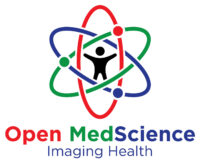Metabolic Disorders Imaging
Metabolic disorders are a diverse group of conditions that result from disruptions in biochemical pathways, often due to enzyme deficiencies or genetic mutations. Imaging techniques play a crucial role in diagnosing, monitoring, and guiding the treatment of these disorders. Advances in molecular imaging have significantly improved the ability to visualise metabolic dysfunctions at a cellular and molecular level, allowing for earlier and more precise intervention.
Positron Emission Tomography (PET) in Metabolic Disorders
Positron Emission Tomography (PET) is widely used in metabolic imaging due to its ability to track metabolic processes in real time. The most common radiotracer, fluorodeoxyglucose (FDG-18), is employed to assess glucose metabolism, which is particularly useful in conditions such as diabetes, neurodegenerative diseases, and cancer metabolism. In diabetes, FDG-PET can evaluate insulin resistance and pancreatic β-cell function, providing insight into disease progression and treatment efficacy.
In neurological metabolic disorders, such as mitochondrial diseases or metabolic encephalopathies, PET can highlight regions of altered glucose uptake, aiding in the differentiation of various neurodegenerative conditions. For example, in Huntington’s disease, FDG-PET may reveal early metabolic changes before structural abnormalities become evident on MRI.
Magnetic Resonance Spectroscopy (MRS) for Metabolic Abnormalities
Magnetic Resonance Spectroscopy (MRS) is a non-invasive technique that provides metabolic information by detecting the chemical composition of tissues. It is particularly useful in diagnosing inborn errors of metabolism such as phenylketonuria (PKU) and mitochondrial disorders. MRS allows for the quantification of metabolites such as lactate, glutamate, and N-acetylaspartate, which are indicative of metabolic dysfunction.
In hepatic encephalopathy, a condition resulting from liver failure leading to neurotoxicity, MRS can detect elevated levels of glutamine and reduced myo-inositol, reflecting ammonia-induced metabolic disturbances. Similarly, in metabolic myopathies, such as McArdle’s disease, MRS can identify deficits in muscle energy metabolism by assessing phosphorus-containing metabolites.
Computed Tomography (CT) and Dual-Energy CT in Metabolic Disorders
Computed Tomography (CT) plays a supportive role in metabolic disorder imaging, particularly in assessing complications such as fatty liver disease or metabolic bone diseases. Dual-energy CT has been increasingly used to differentiate uric acid-containing kidney stones from calcium-based stones, aiding in the management of disorders like gout and hyperuricaemia.
Emerging Techniques in Metabolic Imaging
With advancements in artificial intelligence and hybrid imaging, techniques such as PET/MRI fusion are providing enhanced metabolic and anatomical insights. Additionally, the use of novel radiotracers, such as fluorothymidine (FLT) for assessing cellular proliferation is expanding the scope of metabolic imaging.
Metabolic imaging remains a critical tool in understanding and managing a wide range of disorders, enabling early diagnosis, personalised treatment strategies, and improved patient outcomes.
You are here:
home » Metabolic Disorders Imaging


